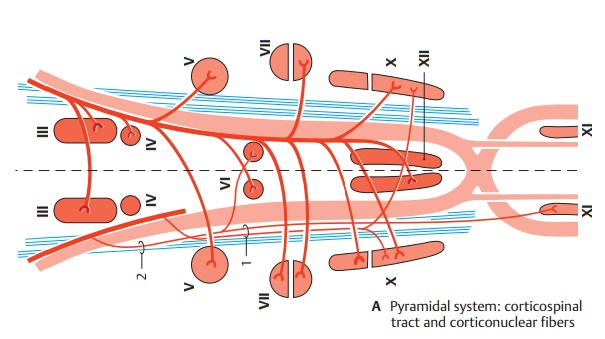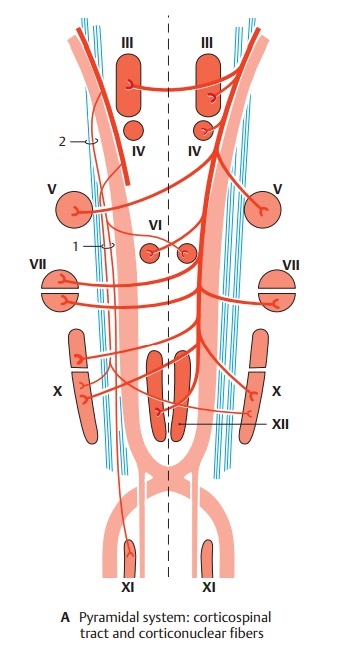Chapter: Human Nervous System and Sensory Organs : Brain Stem and Cranial Nerves
Corticospinal Tract and Corticonuclear Fibers

Corticospinal Tract and Corticonuclear Fibers
The pyramidal tract, or corticospinal tract, runs through the
basal part of the brain stem and forms the pyramids in the medulla oblongata.
Some of
the pyramidal tract fibers termi-nate in the motor nuclei of cranial nerves (corticonuclear fibers):
Bilaterally in the oculomotor nucleus (III),in the motor nucleus of
the trigeminal nerve (V), in the caudal part of the facial nucleus (VII)
(forehead muscles), and in the ambiguous nucleus (X)

After crossing to the contralateral nu-cleus: in
the abducens nucleus (VI), in the rostral part of the facial nucleus (VII)
(fa-cial muscles with the exception of the forehead muscles), and in the
hypoglos-sal nucleus (XII)
Uncrossed in the ipsilateral trochlear nu-cleus (IV)
Clinical Note: Incentral facial paralysis, paral-ysis of facial muscles is caused by
injury to the corticobulbar fibers, yet the mobility of the bi-laterally
innervated forehead muscles is retained.
Aberrant fibers (Déjérine) (A1). At
variouslevels of the midbrain and the pons, fine fiber bundles branch off from
the corticonu-clear fibers and unite to form the mesen-cephalic aberrant tract and the pontine aber-rant tract. Both descend in the medial lem-niscus (A2)
and terminate in the con-tralateral abducens nucleus (VI) and hypo-glossal
nucleus (XII), in the two ambiguous nuclei (X), and in the spinal accessory
nu-cleus (XI).
Related Topics